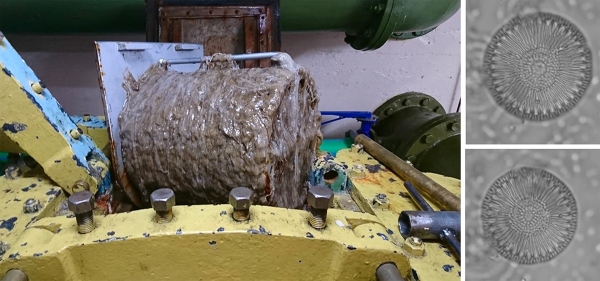The diatom (Lindavia intermedia) that causes lake snow—nuisance slime in clean-water lakes that ruins angling and can block water intakes—was apparently introduced to New Zealand shortly before 2002, but was widespread by 2005. The broad geographical distribution in 2005 was an unexpected finding in a recent survey of archived samples in the NIWA diatom collection.
Lake snow was first reported as a problem in Lake Wanaka around 2004, and was known only from Lake Wanaka for almost 10 years. During that 10 years there were suggestions that lake snow was a response to environmental change. In 2013, lake snow was reported from three other South Island lakes, prompting a re-evaluation of its status. Molecular studies by Landcare Research suggested that L. intermedia was a recent introduction. To obtain a clearer picture of when this diatom arrived in New Zealand, Otago Regional Council (ORC) commissioned NIWA to search archived diatom data and collections.
We examined 184 samples from the NIWA diatom collection (from 1998) and from an earlier diatom collection (Landcare Herbarium, 1970s to 1991). No L. intermedia was detected in 106 samples collected up to 2004, but it was detected in 20 of 66 samples collected in 2005. The data suggested presence in nine lakes, six of which were new location records, including Lake Moawhango (North Island) and Lake Gunn (Fiordland). The earliest records of L. intermedia in New Zealand remain previously documented samples collected in 2002 from Lakes Hayes and Aviemore in NIWA study.
The study for ORC demonstrated the value of maintaining organised, archived biological collections for understanding the Lindavia (lake snow) invasion. The results are already being used to inform further research on the organism and to guide its future management.
External collaborators
Phil Novis, Landcare Research



